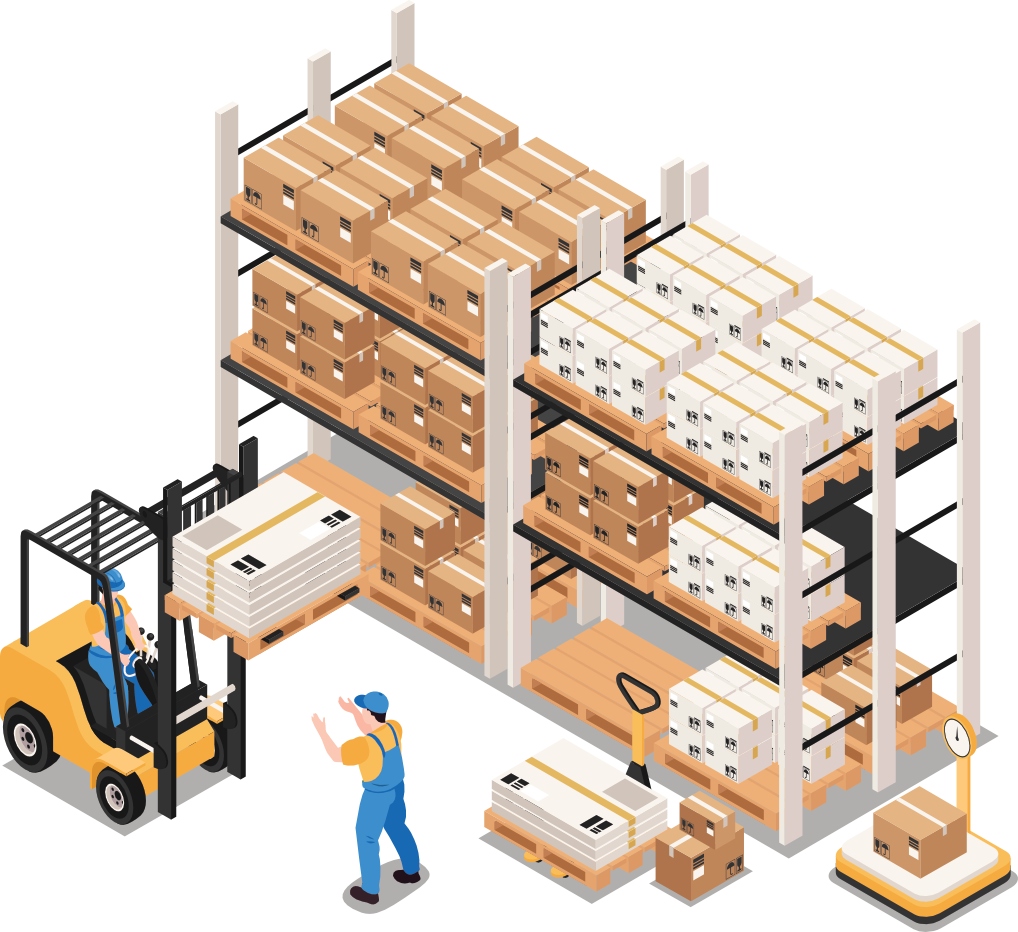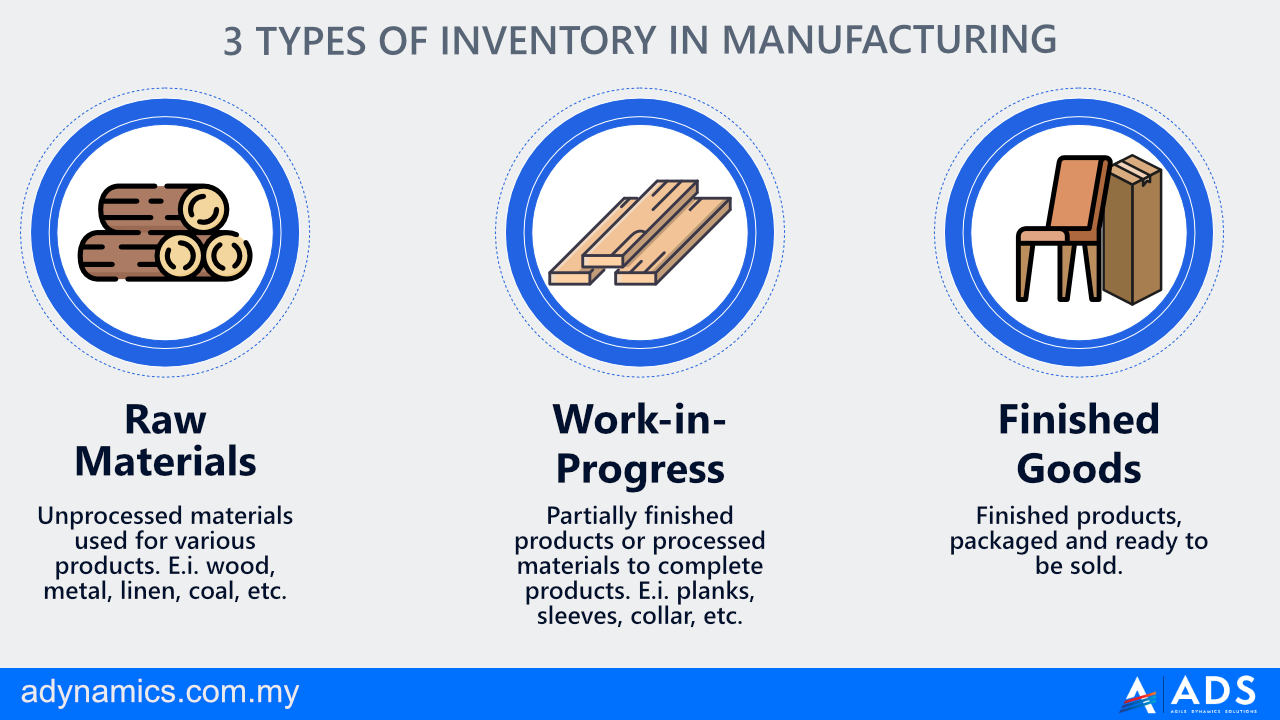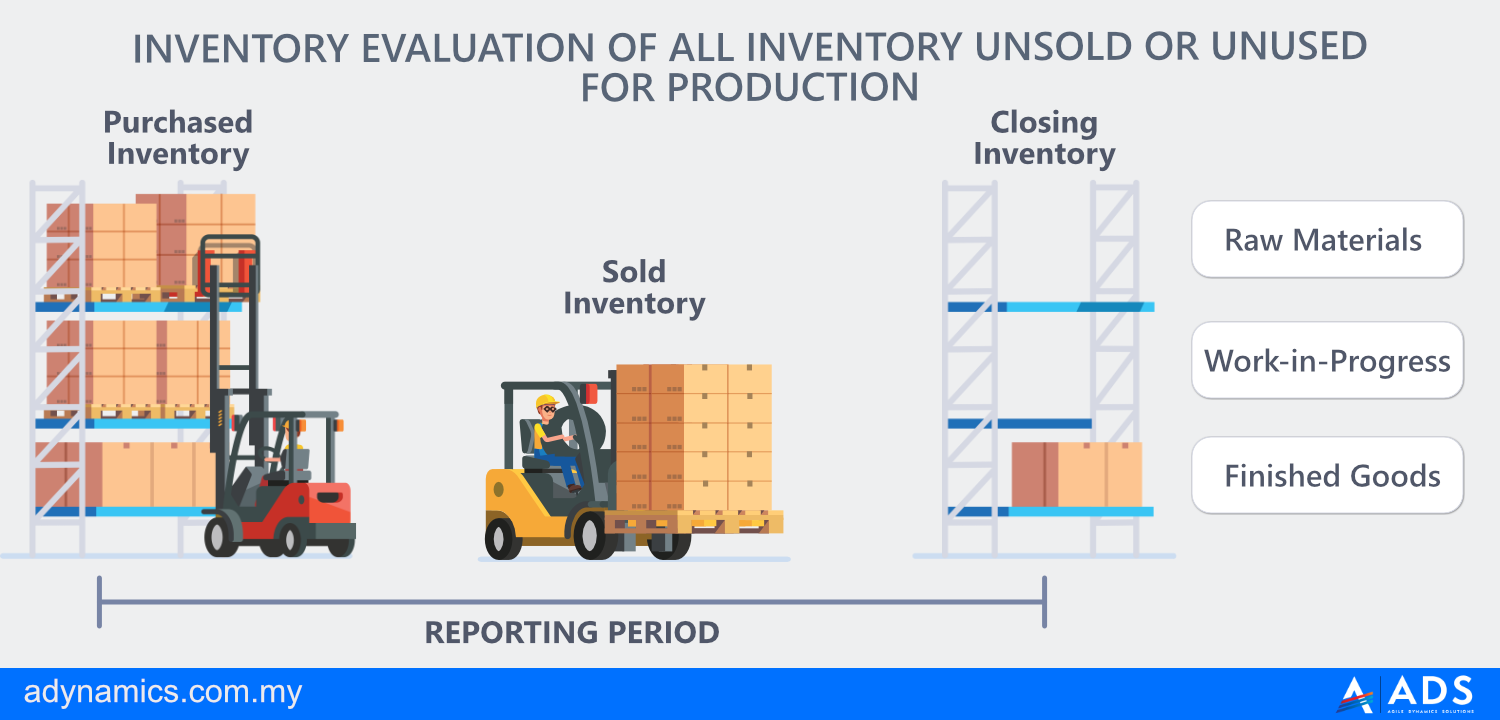After these four main types of inventory, there are also other types of inventory that you should know as well:
5. Work In Process:
This is similar to Work-In-Progress however it tends to be used for short-time production goods that are quickly completed and transferred to finished goods inventory. For example pens, small electronics, plastic boxes, etc.
6. Components:
These are similar to the raw materials inventory as components inventory are materials that are used to create or complete products, except they are recognizable items when the product is completed such as screws, keyboards, screens, etc.
7. Packing Materials:
These include any items your business uses to pack the products you sell, whether it is a squeeze bottle for ketchup, a tube for your toothpaste, boxes to put the tube with toothpaste in, and the boxes to deliver a large number of toothpaste to the retail shop.
8. Buffer Stock (Safety Stock):
This is an extra stock in your Warehouse to protect the business from short supply, supply disruptions, or any scenarios when in case of emergency the business stock has been kept in hand to continue selling or production. For example, keeping extra packaging, protective clothing, screws, or products to keep the production or retail not going out of stock.
9. Service Inventory:
In the service industry, there are certain stock inventories to provide its services. This can include hotel rooms, tables in restaurants to serve customers, hospital beds in hospitals, available appointment slots for using certain machines, tennis courts for tennis clubs, etc. For example, if you have 10 tables in a restaurant that accepts 2 hours booking apart and your restaurant is open 12 hours, then you have a daily inventory of 60 reservations. (Each table can be booked 6 times per day with a 2-hour slot in 12 hours, so 10×6=60)
10. Transit (Pipeline) Inventory:
These are goods or supplies that have already been shipped from the supplier warehouse but have not yet been delivered to the buyer. Whether you are a buyer or seller, you have to account for the inventory transit. For example, if you purchase from Shopee, Amazon, or any eCommerce store before it arrives at you, the inventory is considered under transit inventory. In B2B and long transit times, multiple T&Cs are responsible for this inventory to accurately display it in accounting.
11. Excess Inventory:
This is any item, product, component, raw materials, or other goods stored by a company and is not expected to be sold, used in production, or kept for a long time in the warehouse. For example, grocery stores purchased too many branded sauces that were predicted to be a big hit. But the demand was much smaller than expected and now the retail has too much sauce that is expensive to store.
12. Cycle Inventory:
These are the items that reseller, manufacturers, or wholesaler uses for their day-to-day business to meet regular orders. This stock covers sales and generates cash flows, which the company uses to pay creditors. For example, a grocery store has many staple products such as butter, milk, pastry, and many others. These products are expected to be sold on a regular basis based on forecast and historical data. Of course, cycle inventory can change according to the season.
13. Decoupled Inventory:
These are usually raw materials, parts, and other goods that are set aside as an extra inventory used by Manufacturers in case of any supply chain disruptions, slow production, unseen fluctuations, or shortages on the market in order to meet purchase orders and avoid any business disruptions. It basically acts as a buffer that allows you to continue sales and order fulfillment. For example, if you are manufacturing cars, then having decoupled chips to keep producing your smart cars in case of shortages will help you to keep producing cars even if no new chips are coming.
14. Theoretical (Book) Inventory:
This is all your inventory as per your records in your account books. This is then usually physically counted to ensure the book inventory matches the actual inventory. Usually in hospitality/F&B services, this is a very important practice as theoretical often does not match the actual inventory due to wastages or inaccuracies in portions.
Inventory vs Asset
The main difference between inventory and asset is that inventory is used to sell it to make a profit or produce products that are subsequently sold to make a profit while assets are considered an investment and are used to buy, transfer, store, manage or sell inventory and manage the business operation.
Simply put, inventory is what you sell to make a profit while an asset is what you own to run your business such as office, plant, lorry, forklift, furniture, equipment, etc.
Also in accounting, an inventory is recorded as a current asset as it is intended to sell it within 12 months. However, if the stock is not sold in 12 months, then it is considered a dead stock or obsolete inventory and is counted as a liability.
Therefore, inventory is what a company must sell to stay in business, and it is also a part of the asset, while the asset is a broad term, and it is considered an economic resource that can be both tangible and intangible forms and it is used to produce value for the organization.
Therefore, having centralized operation and using business management solutions where accounting software, inventory system, and sales software are integrated allows you to accurately manage your business operation, and financials and make the right decision.
For example, Dynamics 365 Business Central is an all-in-one enterprise resource management system for Small-Medium Size Businesses to centralize, simplify and automate their business processes across Finance, Supply Chain, Sales, Inventory and Warehouse, Customer Service, Manufacturing, and Projects.
Inventory Location
Inventory locations are used in every basic warehouse management system (WMS) to organize and easily find where inventory items are stored and picked from in a WMS.
The term location refers to the place where items are stored and drawn from. To make it easier systems allow you to configure the inventory location hierarchy with as many levels as are required.
Locations can be on-site locations such as headquarters and warehouses or they could be off-site locations like your contract manufacturer or finished goods distribution.
Why Do You Need Inventory Management?
As said, inventory is a company’s biggest asset it’s also very crucial to have proper inventory management to ensure company profitability and health as it helps to make sure you have the right amount of stock and avoid costly mistakes such as too much or too little stock, thus limiting the risk of stockouts, stock excess or inaccurate records.
The right inventory management system helps you to have the right balance in your inventory and helps you to provide important information on when to invest in more inventory to avoid overstock and deficit in the budget. Also, check out our guide on ERP Inventory Management.
Or not having enough stock and you compromise on customer experience by making them wait or losing on business when customers go somewhere else to get the item.
Also, public companies must track inventory as a requirement for compliance with Securities and Exchange Commission (SEC) rules and the Sarbanes-Oxley (SOX) Act. Companies must document their management processes to prove compliance.
With that, a close tab on the movement of inventory can make or break your business and that’s why entrepreneurs always emphasize effective inventory management. While a few business owners do understand the significance and cruciality of tracking inventory regularly, some fail to realize its importance making their business fall through the unseen cracks.
More Resources










